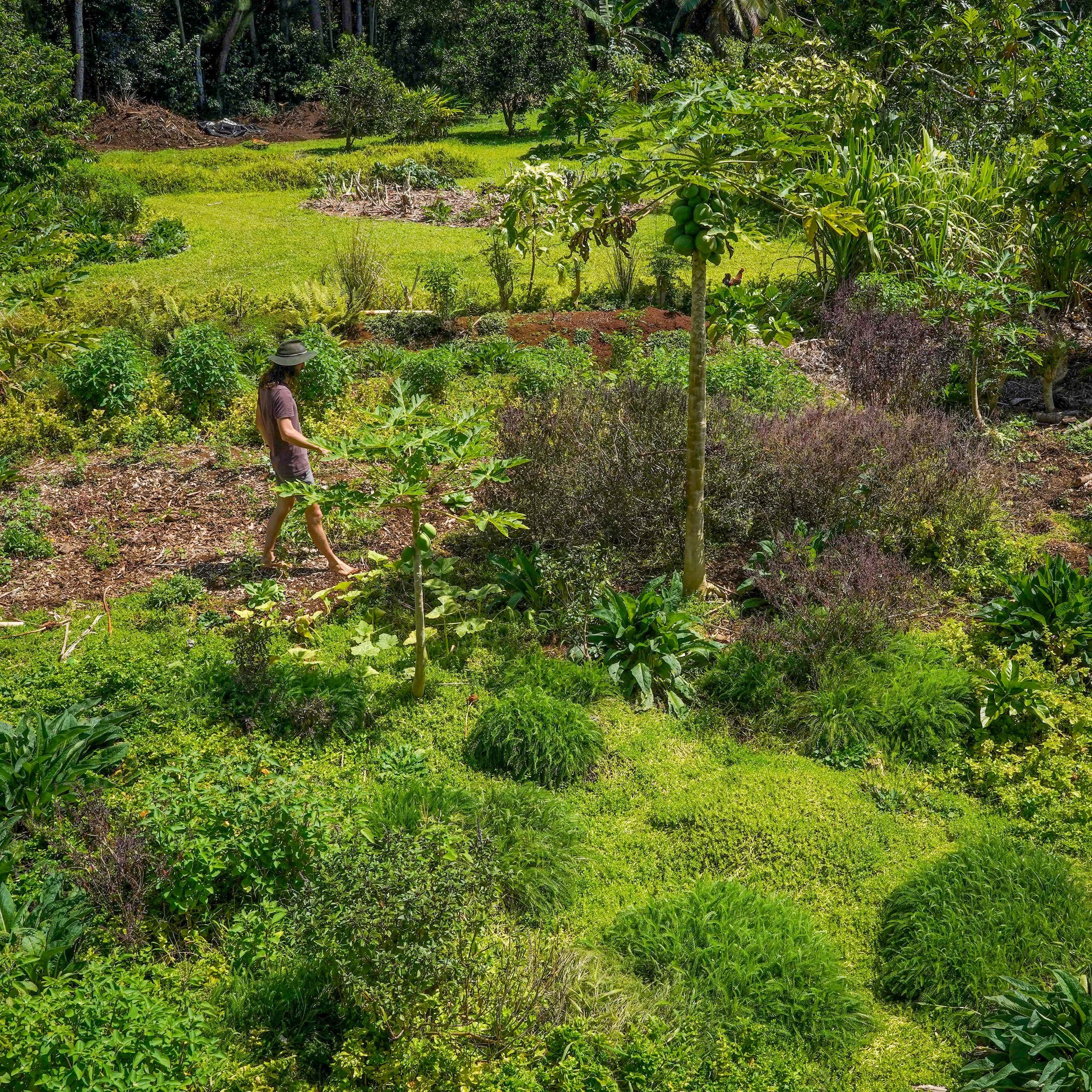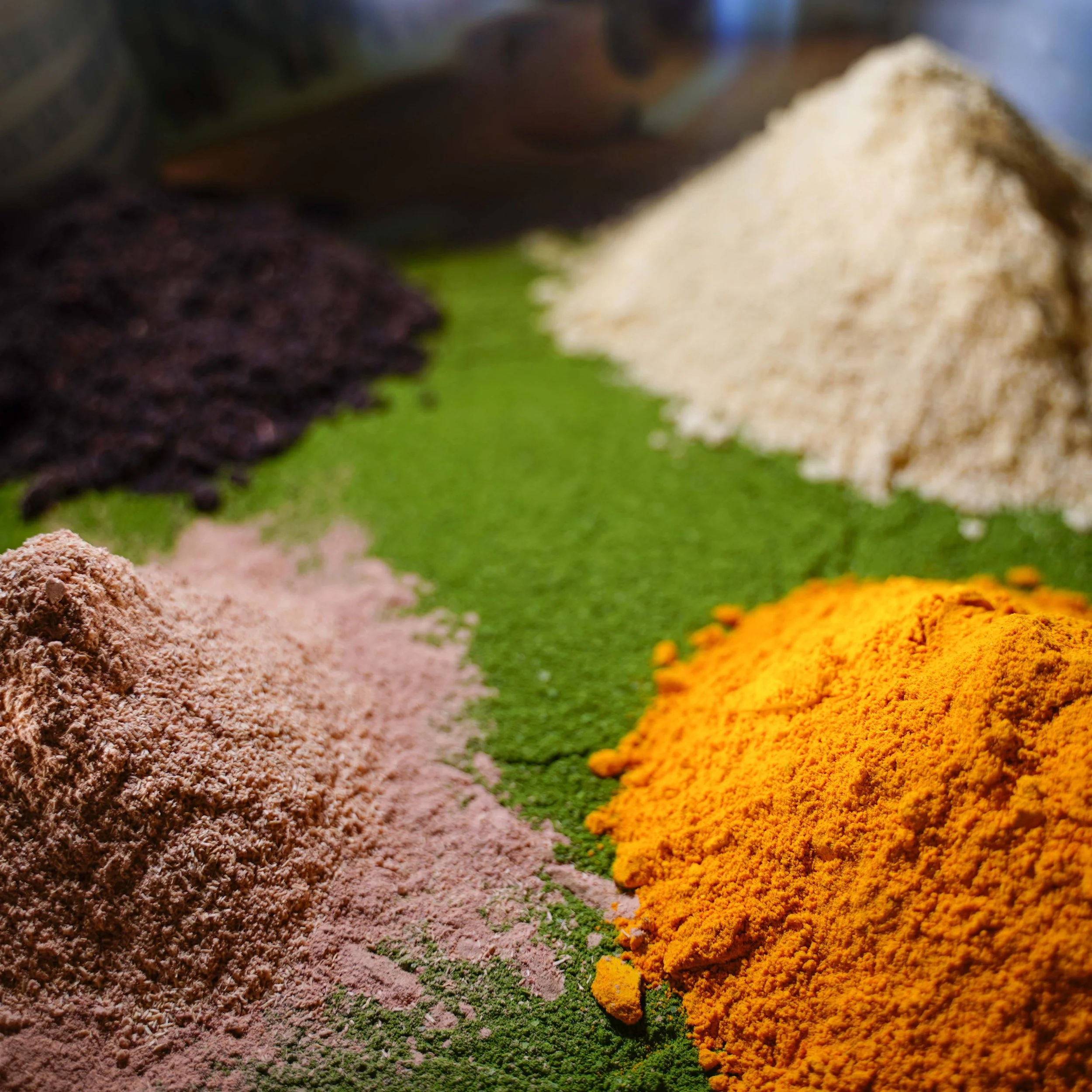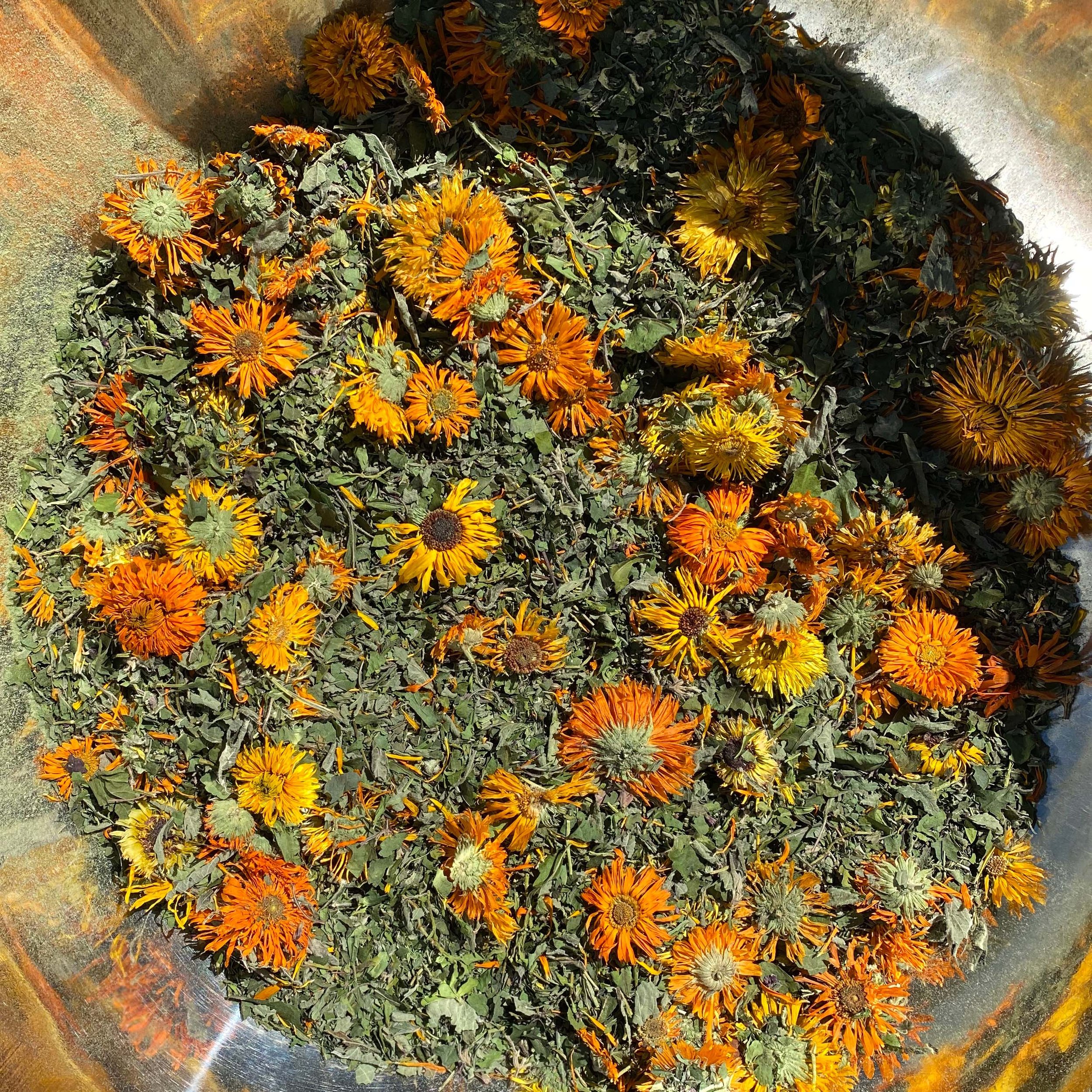Ancient Plant Medicine Revival
As I walk through these jungle medicinal gardens, I first pick and taste the calming, mushroom-flavored, purple vervain flowers. I then try the peppery zest of the ripened all-spice berry, and as the potent flavor heightens my sensory system, my eyes are drawn to the garden floor and the yellow-flowered, supple tarragon bed beneath me. I gently pick some and taste its licorice flavor. Afterwards, I spot some rich, ruby red coffee beans and eagerly pop a few of these fruity antioxidant skins into my mouth. I lean over to waft the calming fragrance of the enchanting Tulsi flower while lightly stepping barefoot on the carpet-like, green ground cover of Self-Heal and Laukahi. I breathe deeply before rubbing the potent antiseptic oils directly from the needle-leaves of the Tea Tree Plant.
An unfathomable experience is unfolding inside me as well as around me. I'm connecting with the flavors, scents, and energies of these ancient tropical plant medicines. Towards the end of my garden journey, I chew on the bark of the cinnamon stick, inspiring a smile on my face. My eyes are then quickly captivated by the vibrant cacao pods and its magnesium-rich, heart-opening energy. The Flora is alive as it oxygenates the air, nourishes the soil beneath it, and hydrates the symbiotic system surrounding it. The gardens are a truly restorative retreat - beginning with the high-vibe intention of the most abundant elements on earth: plants, oxygen, and water.
The Lost Medicine
Since the days of the East India Tea & Spice Company ravaging the Jungle Medicine Gardens of the Spice Islands, so much vital information of plant medicine has been lost. How did the Romans grow and utilize Sage, Rosemary, Lavender, Oregano, Thyme, and more of their storied Mediterranean herbal medicine to strengthen their vast empire? What was so special about the ancient plant medicine of yesteryear that lured hundreds of men from Europe to sail the seas for years on end, hunting for precious tropical spices like Black Pepper, Cinnamon, and Nutmeg to cure its devastating Black Plague?
Why are the most powerful healing plants on the planet not in our everyday culture, hospitals, and healing centers? Where are the Comfrey Casts to heal bones, ligaments and tendons; Noni Juice to circulate blood and kill infections; Turmeric Poultices to reduce toxic inflammation; and Lemon Balm, Rosemary, Sage, Mint Tea to uplift debilitating depression? If true healing is found in the practice of subtle restoration, why are these attested plant medicines not utilized in our everyday culture? The reason is that we don’t have a widespread understanding of the potent healing powers of our planet’s medicine cabinet. What if that was all about to change?
The Permaculture Immune System
We learn through persistent trial and error which plants thrive when planted near one another as optimal companions, ideal symbiotic relationships, and collective immunity. We reconnect with the ancient wisdom of sustainable backyard gardens and the healing benefits of high-efficacy plant medicine within them. The Yarrow befriends the Bacopa to defend the all-critical first layer or “ground cover” of the gardens; Comfrey, Sisso Spinach, and Lemongrass create natural guilds at the knee-high level to protect our garden perimeters; Tulsi, Mamaki, and Pinneaple Sage hold the all-vital, eye-level, shrublike, center space of our unique individual guilds, while Papayas, Moringa, and Pigeon Pea dominate the canopy of our jungle medicine gardens.
The plants create the immune system for our environment and serve as the first line of defense against any and all disease. These longevity-minded perennials effectively act as the closed-loop fertilizers and pesticides, promoting a potent array of anti-fungal, antiseptic, antibacterial, antiviral, and antiparasitic botanical characteristics intended to defend one another and the environment. An avant-garde yet ancient system that we now refer to as Permaculture is resulting in a healthy balance of our air, water, and environment.
The Ancient Revival
As we plant our communities with more intention, the plants begin to literally have our back. The Hawaiians refer to this connection with the land as Mālama ʻĀina: we take care of the land and plants and they will take care of us. We thrive in this living, breathing, symbiotic immune system that fosters human consciousness and the critical mind-body connection. As we experience the energies of the plants, we gain the insight to revive the ancient wisdom of the Romans, Peruvians, Africans, Chinese, Hawaiians, Indians, and other prosperous native cultures. Communities of people rooted in the practice of sustainable gardening and the knowledge of how to apply plant medicine to Heal Yo’ Self. Imagine if we enjoyed the healing powers in a cup of tea as easily as we do a cup of coffee, glass of milk, can of soda.
Can such an Ancient Plant Medicine Revival help redefine the modern-day health and wellness movement? Economically speaking, the sustainable yield per square foot is unparalleled in nutrient production, operational efficiency, ecosystem sustainability, and medicinal efficacy. Scientifically speaking, the alkalinity of plant medicine indisputably helps ameliorate acidic-toxic disease and simultaneously attracts more alkaline energies to help heal ourselves. It is like a beautiful river attracting scenic natural environments, healthy fisheries, and beautiful birds. Cultivation of intentional plant medicine revives and unifies us with the land, ancestors, water, and wisdom of the collective universal intelligence




